Exactly twenty years ago, on 20 March 2000, thirty-five Sikh men were massacred by armed assailants in Chitti Singhpora village in South Kashmir’s Anantnag district. Nearly everyone in the village recalls the evening in the exact same way: the assailants turned up at around 7:30 pm, lined the men up in front of the two central gurdwaras on the pretext of a routine ‘crackdown’, shot them dead, and disappeared into the night.
Hidden amongst lush apple orchards, the village is hard to find, except for a yellow banner marking its entrance. It will replace one that lay in tatters until recently. It is the first of many reminders in this living memorial, “shadeedan da pind” (village of the martyred), as it has come to be known.
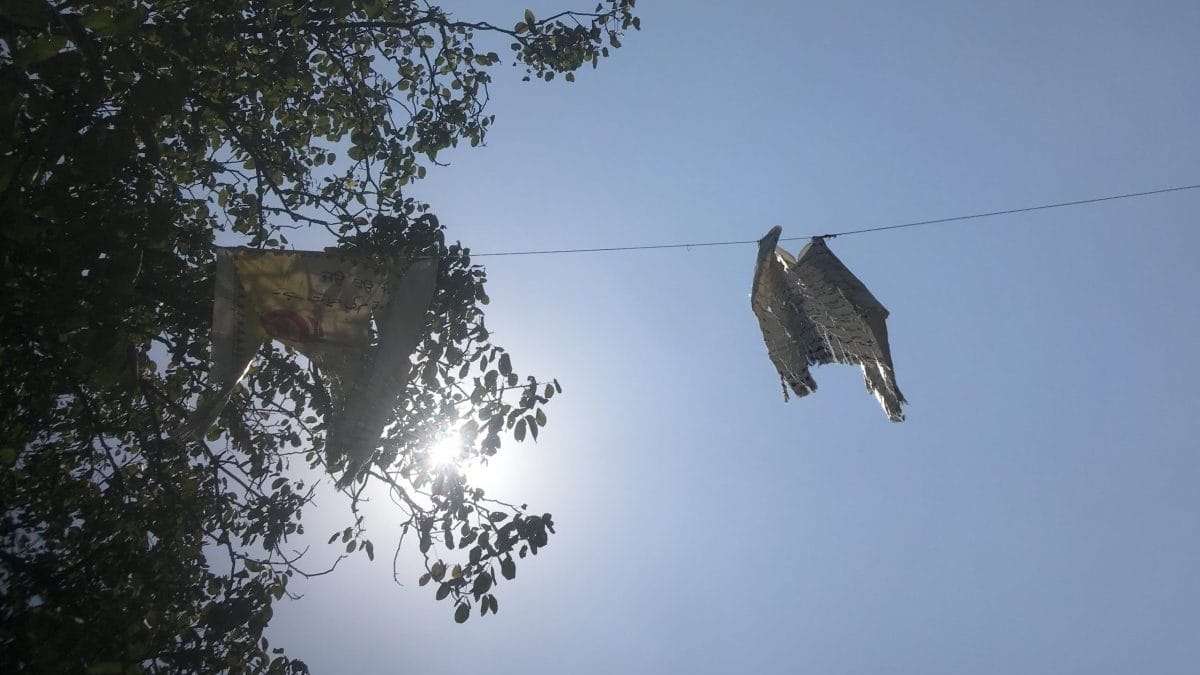
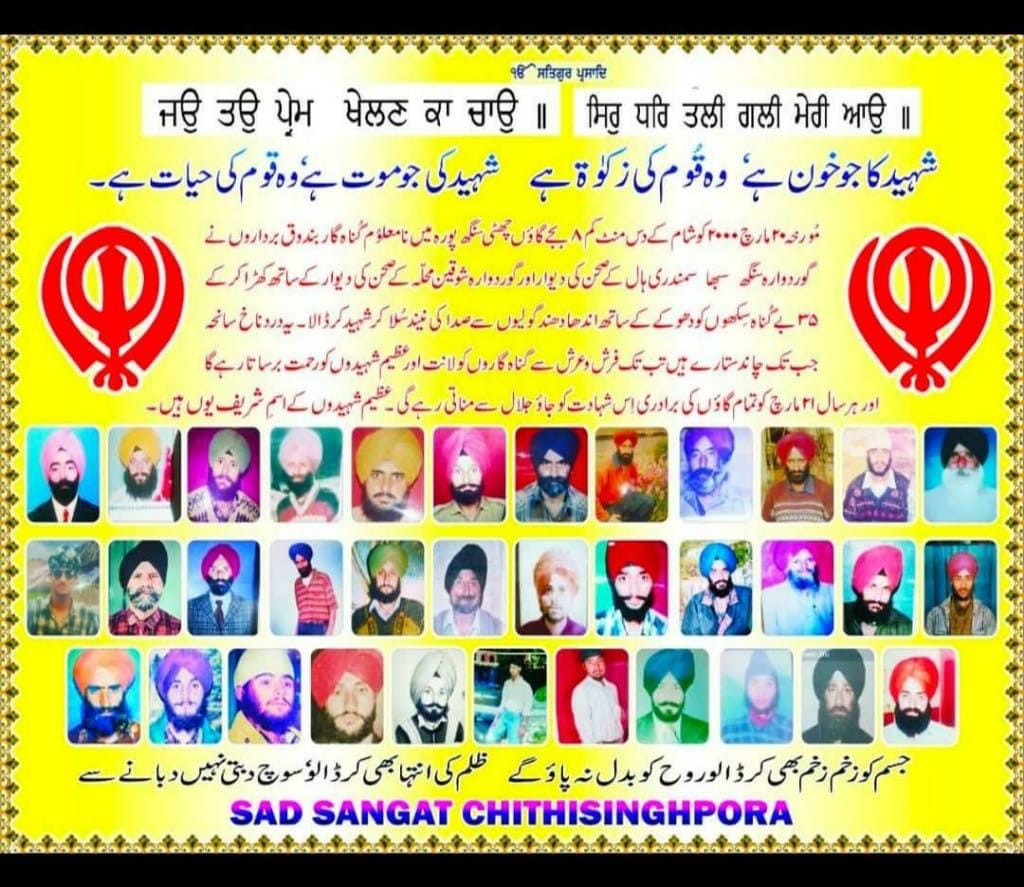
Although 20 years have passed, and efforts to keep Chitti Singhpora alive in the public memory continue, people’s own willingness to remember tells a different story.
“They are just forgetting it, they are trying to forget it,” lamented 25-year old Baani over the phone. For Baani (not her real name), whose father was one of those massacred, March is a difficult month in the village, not only because most of the families are away in their winter homes in Jammu, but also because to her it feels like people have moved on.
At the commemoration ceremony in 2019, attended by less than a few hundred local people, she showed me the inside of Gurudwara Samundri Hall where the last rites of the ‘martyrs’ — as the village remembers them — were performed. “Kutte bathroom karde si ethe (dogs would relieve themselves here),” she said, informing me that the place was only recently fenced after family members of the deceased protested the desecration of a space that has become sacred to them.
There was a memorial outside with a plaque embossed in the wall of Gurudwara Samundri Hall (where 17 of the 35 men were lined up and shot dead), stating,
“In Memory of 35 Martyrs,
Who Were Murdered On The Night of
March 20, 2000,
By Unknowns”
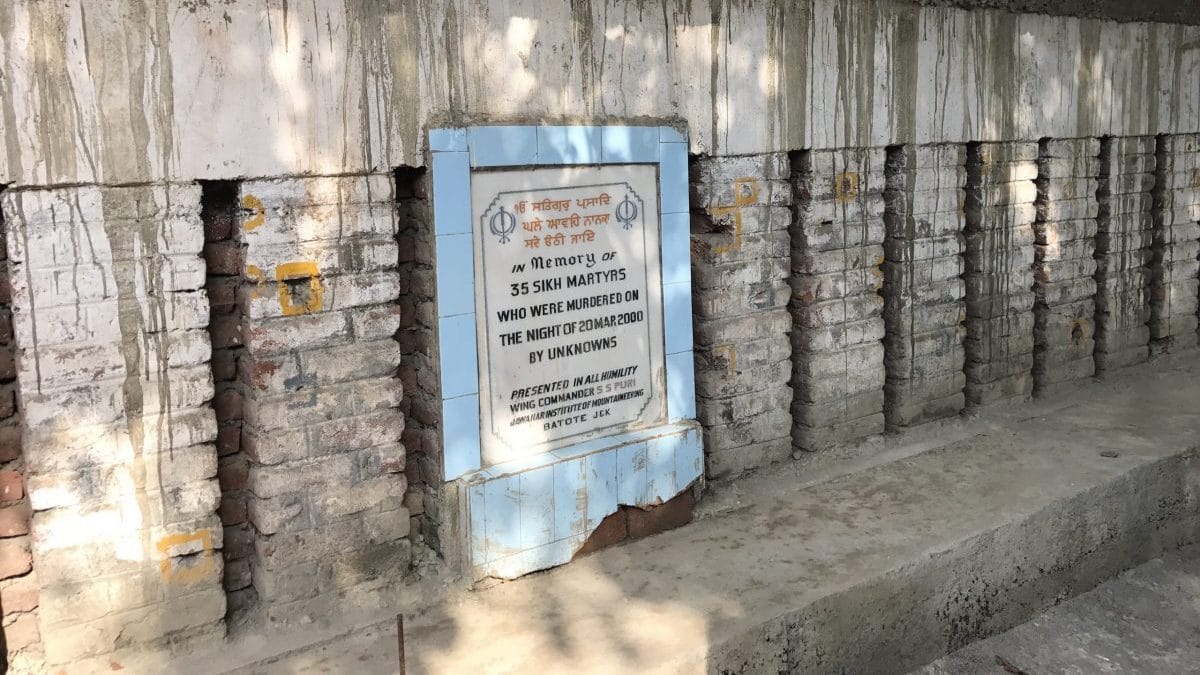
The plaque is gone. For now, only the holes that the bullets made in the wall, highlighted in yellow, remain.
Earlier in 2018, a fire that started due to an electric malfunction engulfed almost all of Gurudwara Samundri Hall, including the wall that carried photos of the martyred — a second “shaheedi” as the village residents saw it.
Work is on to rebuild its main façade, with the aim of constructing a ‘historical’ gurdwara marking the Chitti Singhpora massacre.
But while these markers are important reminders of a history that risks erasure, what those who lost their loved ones most desire, is justice.
Also read: Davinder arrest threatens the fragile trust Kashmiri Sikhs enjoy with Indian state & Muslims
Searching for closure
For three years now, I have been in continuous conversation with the men and women, old and young, who do this labour of remembering. While media, researchers like myself, guests curious to know its history, and even anniversaries come and go, answers to what happened and why remain elusive. So does the hope that these answers will ever come.
While Chitti Singhpora has seen ‘development’ after the massacre, as many of the local people often remark, Darbara Singh (name changed), a petite man with huge brown eyes and a heart to match, asks me, “Tussi mainu dasso, roadan ta ban hi janiya si, par sadde Daddy da jawab kaun dega? (you tell me, roads would have been made anyway, but who will answer for our father’s death?)”.
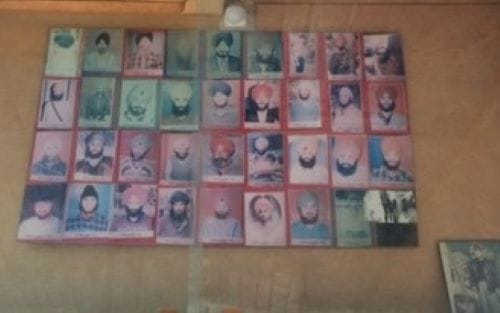
Memorials, as anthropologist Ruth Van Dyke writes, are “conscious statements about what to remember”, and place, as sociologist Pierre Bourdieu argues, “is a starting point to retrieve memory”. But where there is a litany of massacres that have hardly left anyone untouched, what is memorialisation without justice?
The Indian government said the massacre was the work of terror outfits from across the border, but Kashmiris (in my research, both Sikhs and Muslims) believe it was the work of ‘agencies’ to show American President Bill Clinton, who was visiting on the day, that minorities in Kashmir were unsafe. Yet another narrative is that this was the work of renegades, intended to create communal tensions between Kashmiri Sikhs and Muslims.
Also read: Imran Khan’s fantasy to revive Khalistan isn’t happening because Sikhs aren’t gullible
Just another chapter in history
Whatever the ‘truth’, as 60-year-old Nanak Singh, the sole survivor of the massacre, said to me in my first meeting with him in 2017, “Koi vi kuch vi kar sakda hai. Militants aakhange government of India ne kitta, government kahegi militants ne maarya. Es vele Kashmiri Sikh nihatta hai. We are scapegoats, jad lod payegi, qurban kar den ge (Anyone can do anything. The militants will say the Indian government has done it; government will say militants killed them. At this time, the Kashmiri Sikh is helpless. We are scapegoats, when needed, they will sacrifice us).”
To date, Chitti Singhpora has been the subject of only one government inquiry, and even that was never made public and was later found by a Justice Pandian commission probe to have had many irregularities. One of these relates to the five Kashmiri Muslim men who were killed in the days after, in a nearby village called Panchalthan. You have probably heard of it as the Pathribal encounter. The case is still being fought in the Indian Supreme Court.
In the quagmire that is Kashmir, the impossibility of seeking the ‘truth’ is perhaps why Chitti Singhpora has been relegated to a ‘localised’ event, one which Baani said, people are trying to forget. It’s also why, as Darbara Singh cautioned, “E ta itihaas banke rehe jayega, hor kuch ni hona (this will become just another chapter in history, nothing else).”
The author is a PhD Candidate in the Department of Geography and Urban Studies at Temple University. Views are personal.



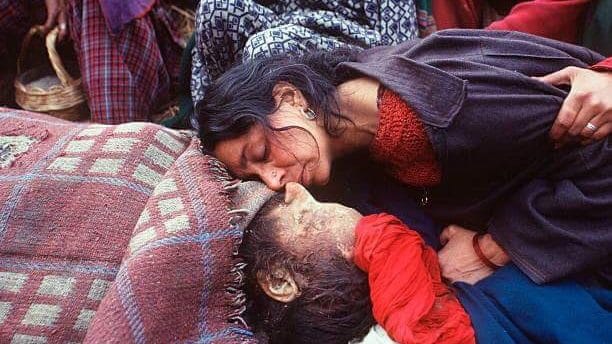



Quite extraordinary , the events in Chitti Singhpora , yet again shows the capacity of human beings for evil .
Abdullahs, Muftis, Azads and Sozs with their Pakistani masters did that just like they did it to Kashmiri Hindus.
Kashmiri Hindu genocide and exodus
Sikh massacre
Sharia implementation in secular India under most secular ghulam nabi azad
Roshni act to give govt land to illegal occupiers
Granting citizenship to 1 lakh rohingays
Protesting the rehabilitation of Kashmiri Hindus in the valley
This is the real face of Kashmiriyat, Jhamooriyat, Insaniyat.
Media including print are culpable in the coverup of this jaghanya aapradh.
It was done by indian agencies everyone knows that..sikh ppl of Kashmir cant do anything about it,if it was done by militants why is your gotv fearing to investigate it honestly
If lack of investigation is the basis of your argument then maybe you should look into a more than few ‘un-investigations’ at home in Pakistan. When your chemically enhanced PMIK talks about genocide, he forgets the kashmiri pandits and sikhs, totally ignore what his uncle Gen niazi did in Bangladesh!
The writer should desist from doing propaganda based on her shoddy analysis.
Too much innocent blood has been shed in Kashmir. That should lead us to try an approach marked by greater Insaaniyat, becoming increasingly rare now. I don’t believe in conspiracy theories, but I believe Republic and Times Now even less.